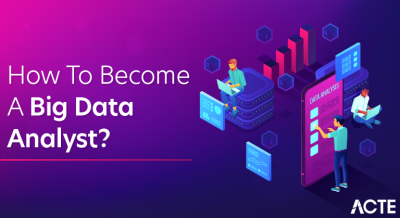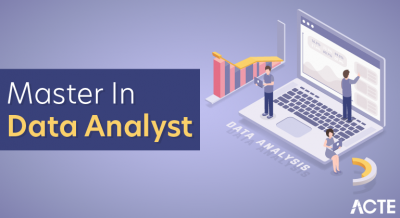
- Introduction to Data Science
- Key Components of Data Science
- Data Science Life Cycle
- Skills Required
- Importance of Data Science
- Data Science vs Data Analytics
- Tools and Technologies
- Conclusion
Introduction to Data Science
Data Science is an interdisciplinary field that focuses on extracting valuable knowledge, insights, and information from both structured and unstructured data using scientific methods, algorithms, and systems. It integrates principles from mathematics, statistics, computer science, domain expertise, and data engineering to analyze vast amounts of data effectively. The primary goal of data science is to uncover hidden patterns, predict future trends, and support data-driven decision-making processes across various sectors. In today’s digital era, the volume of data generated is growing exponentially, driven by sources such as social media platforms, Internet of Things (IoT) devices, online transactions, and sensors embedded in everyday objects, making Data Science Training increasingly essential. This explosion of data has created a demand for professionals who can interpret complex datasets and translate them into actionable business strategies. By leveraging advanced analytical techniques and machine learning algorithms, data scientists can identify trends that might otherwise go unnoticed. This capability enables organizations to optimize operations, personalize customer experiences, detect fraud, and innovate products and services. As a result, data science has become a critical asset in industries like healthcare, finance, retail, technology, and many more, making it one of the fastest-growing and most sought-after fields in today’s job market.
Interested in Obtaining Your Data Science Certificate? View The Data Science Course Training Offered By ACTE Right Now!
Key Components of Data Science
Data Science consists of several interconnected components that work together to extract meaningful insights from raw data. The process begins with Data Collection, where raw data is gathered from diverse sources such as sensors, APIs, databases, and user interactions. This data forms the foundation for further analysis. Next, Data Cleaning is essential to remove errors, duplicates, and inconsistencies that can skew results an important part of A Day in the Life of a Data Scientist. Clean data ensures reliability and accuracy in the subsequent steps. Following this, Exploratory Data Analysis (EDA) is conducted to uncover patterns, correlations, and anomalies within the dataset. EDA helps data scientists better understand the data and guides feature selection. Feature Engineering then transforms raw data into useful features that enhance the performance of predictive algorithms. This step may involve creating new variables, normalizing data, or encoding categorical variables.

The core analytical phase includes Statistical Modeling and Machine Learning, where algorithms are applied to build models that can predict outcomes or describe data behavior. After model creation, Data Visualization plays a vital role in communicating complex results clearly and effectively to stakeholders. Finally, Deployment integrates the model into production environments for real-world application, while Monitoring ensures the model maintains its accuracy and relevance over time through ongoing evaluation and updates. These components collectively drive successful data science projects.
Data Science Life Cycle
- Problem Definition: Understanding the business problem or research question is the first step. Clear objectives guide the entire data science project.
- Data Collection: Gathering relevant data from various sources, including databases, APIs, or external datasets, forms the foundation for analysis.
- Data Cleaning and Preparation: Raw data is often messy and inconsistent. This stage involves handling missing values, removing duplicates, and transforming data into a usable format.
- Exploratory Data Analysis (EDA): Using statistical methods and visualizations, data scientists explore the data to identify patterns, trends, and anomalies that inform model selection, often utilizing Top Data Science Programming Languages.
- Model Building: Selecting appropriate machine learning or statistical models to analyze data, predict outcomes, or classify information. Models are trained and validated for accuracy.
- Evaluation: Assessing model performance using metrics such as accuracy, precision, recall, or RMSE ensures the model meets the project’s goals.
- Deployment and Monitoring: The final model is deployed into production for real-world use. Continuous monitoring and maintenance ensure it remains effective over time.
- Programming: Proficiency in languages like Python and R is critical for data manipulation, analysis, and building machine learning models.
- Statistics and Mathematics: A solid understanding of probability, statistics, linear algebra, and calculus helps in designing models and interpreting results accurately.
- Data Wrangling: Skills in cleaning, transforming, and organizing raw data from various sources are essential to prepare it for analysis, a core focus of Data Science Training.
- Machine Learning: Knowledge of supervised and unsupervised learning algorithms, model evaluation, and tuning is necessary for predictive analytics.
- Data Visualization: The ability to create clear and compelling visualizations using tools like Tableau, Power BI, or Matplotlib enables effective communication of insights.
- Database Management: Understanding SQL and NoSQL databases allows efficient data extraction and management from large datasets.
- Communication: Strong verbal and written communication skills are vital to explain complex technical findings to non-technical stakeholders and collaborate with cross-functional teams.
- Career Focus: Data Science roles often demand more technical depth and innovation, while Data Analytics roles emphasize business understanding and communication.
- Scope: Data Science is a broad field encompassing data collection, processing, modeling, and interpretation, while Data Analytics primarily focuses on analyzing existing data to find patterns and generate insights.
- Purpose: Data Science aims to build predictive models and uncover hidden patterns using advanced techniques like machine learning, whereas Data Analytics focuses on descriptive and diagnostic analysis to understand what happened and why.
- Data Types: Data Science deals with both structured and unstructured data, such as images, text, and videos, while Data Analytics mainly works with structured data from databases or spreadsheets, highlighting the differences in Big Data vs Data Science.
- Skills Required: Data Science requires strong programming skills (Python, R), machine learning knowledge, and statistical expertise. Data Analytics relies more on statistical analysis, visualization tools, and SQL for data querying.
- Tools Used: Data scientists use tools like Jupyter Notebooks, TensorFlow, and Hadoop, while data analysts commonly work with Excel, Tableau, Power BI, and SQL.
- Outcome: Data Science produces predictive and prescriptive insights, helping businesses make data-driven decisions about the future. Data Analytics provides reports and dashboards for understanding past performance.
To Earn Your Data Science Certification, Gain Insights From Leading Data Science Experts And Advance Your Career With ACTE’s Data Science Course Training Today!
Skills Required

Importance of Data Science
Data Science plays a crucial role in the digital era by helping organizations transform vast amounts of data into actionable insights. This capability allows businesses to make informed decisions, optimize operations, enhance customer experiences, and unlock new revenue opportunities. Across industries, data science is driving innovation and efficiency. In healthcare, data science enables early diagnosis of diseases through pattern recognition, personalized treatment plans based on patient data, and even predicting outbreaks to mitigate public health risks. Financial institutions rely on data science for detecting fraudulent transactions, managing risks effectively, and forecasting market trends to inform investment strategies, creating numerous Python Career Opportunities. Retail companies use data science to manage inventory efficiently, develop recommendation systems that personalize customer experiences, and segment customers for targeted marketing. Governments utilize data-driven insights to craft effective policies, improve disaster response mechanisms, and plan urban infrastructure to better serve citizens. Overall, data science fuels competitive advantage by turning complex data into strategic assets. As industries increasingly adopt data-driven approaches, data science remains at the forefront of technological progress, helping organizations navigate challenges, identify new opportunities, and stay ahead in a rapidly evolving landscape. Its impact continues to grow, making it indispensable across all sectors of the economy.
Gain Your Master’s Certification in Data Science by Enrolling in Our Data Science Masters Course.
Data Science vs Data Analytics
Tools and Technologies
Data Science plays an essential role in today’s digital world by helping organizations convert vast amounts of raw data into actionable insights. This process empowers businesses to make informed decisions, streamline operations, enhance customer experiences, and uncover new revenue streams. Across diverse industries, data science is a catalyst for innovation, efficiency, and competitive advantage. In healthcare, data science supports early disease diagnosis by recognizing complex patterns, enables personalized treatment based on individual patient data, and helps predict disease outbreaks to protect public health. Financial institutions depend on data science to detect fraudulent activities, manage risk, and forecast market trends, improving investment decisions and regulatory compliance areas where understanding Machine Learning Vs Deep Learning is crucial. Retailers leverage data science for efficient inventory management, creating recommendation systems that boost customer satisfaction, and segmenting customers to target marketing efforts more effectively. Governments apply data-driven insights to formulate better policies, enhance disaster response, and optimize urban planning to improve citizens’ quality of life. By transforming complex data into strategic assets, data science empowers organizations to stay agile in a rapidly changing environment. As the adoption of data-driven methods continues to expand, data science remains a vital force shaping the future of business, healthcare, finance, and public services, making it indispensable in virtually every sector of the economy.
Preparing for a Data Science Job Interview? Check Out Our Blog on Data Science Interview Questions & Answer
Conclusion
Data science has emerged as a transformative force in the modern world, revolutionizing how organizations approach decision-making and problem-solving. By leveraging vast amounts of data, sophisticated algorithms, and advanced computational power, data science enables businesses and institutions to gain deeper insights, predict future trends, and optimize processes. This data-driven approach not only enhances efficiency but also fosters innovation, helping organizations stay competitive in an increasingly complex landscape. The interdisciplinary nature of data science, combining statistics, mathematics, programming, and domain expertise, makes it a versatile and powerful tool across various sectors, including healthcare, finance, retail, and government, which is emphasized in Data Science Training. Its ability to extract meaningful information from structured and unstructured data drives smarter strategies, personalized customer experiences, and improved operational outcomes. Moreover, the growing reliance on data science highlights the importance of continuous learning and skill development for professionals in the field. As technology evolves, so do the tools and techniques, requiring data scientists to adapt and innovate constantly. In summary, data science is no longer just a specialized discipline but a critical component of modern business and society. Its impact continues to expand, making it an essential driver of progress, growth, and competitive advantage for organizations worldwide. Embracing data science is key to thriving in the digital age.





